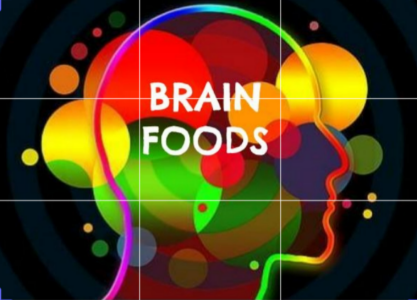Did you know that your brain needs fed with certain foods to function properly just like the rest of your body? Introduce students to these foods with this Brain Foods Mini-Lesson & Lab and the importance of daily consumption for school success! It’s an engaging way to get their brain and school year off to a great start!
Foods Mini-Lesson & Lab and the importance of daily consumption for school success! It’s an engaging way to get their brain and school year off to a great start!
Set
- Intro: What did you eat so far today? Make a prediction: Did the foods you ate fuel your brain for the school day? Ask students to share what they’ve eaten and create a master list on the board to revisit later.
- To learn more about brain foods, show students the Ted Ed video titled, “How Food Affects the Brain” just to get an overview of the food/brain connection. Have students listen and if desired, have them participate in a +1 Routine movement activity to review the info presented.
- Go over the Brain Food Briefs:
- Discuss and define
- Brain Foods: Nutrient-rich foods that improve concentration, memory, mood, and cognitive function
- Explain Connection to School Success:
- Better memory = improved test performance
- More focus = completing assignments faster & more accurately
- Balanced mood = less stress and better social interactions
Materials
- iPad or Laptops
- Projector & Screen
- Colored Pencils, Markers or Crayons
- Highlighters (optional)
- Index Cards
Activities
- To help students learn more about which foods are actually “brain foods” and contribute to healthy brain function, have them do some research.
- Assign students one of the Sketch & Tell Templates and have them research a list of the top 9 brain foods, completing the Sketch & tell around them adding food name, sketch and brief benefits with the colored pencils, markers or crayons.
- Once Sketch & Tell Templates are finished, set them up for a gallery walk. Have students walk about the sketches and complete the following prompts:
- Find two brain foods that appear on every template you viewed. Why do you think these are so popular?
- Write down one fact or benefit to a food others had that was not on your own template. Whose template did it come from?
- Which brain food do you think would be the easiest for most students to add to their daily routine? Why?
- As you look at the board of foods eaten, how many of them and which ones actually show up on the sketch & tell templates?
- If you could swap one of the 9 brain foods for a food listed on the board (not part of the 9), what would you choose and how would you justify it?
- Discuss the answers as a class. Revisit the foods listed on the board and make connections to those that are brain foods and those that are not. This can be an eye-opener to the types of foods students are actually consuming.
- While we can eat all of the aforementioned foods individually, they can also be combined to provide many brain foods in one serving. Any ideas of recipes that might do this? One way is via muffins!
- Let students know that they will be preparing Fruity Tutti Muffins in the lab. However, before doing so, you want them to get aquainted with the recipe and preparation steps.
- Pass out the Fruity Tutti Muffins recipe and prompts. Have students individually complete them. Allow them to reference the gallery walk if necessary to review brain food examples. Go over all of the answers so students know important words, steps, recipe info, etc before you have them fill in the prep and clean up jobs. Note: This recipe makes 12 muffins. You will need to adjust the recipe if you need more or less. This is a great opportunity for students to practice the math skills by adjusting the recipe for you.
- Prep the muffins in the kitchen labs. If you have 43 minute periods, students may have to wait to eat them the next day so they have time to cool. If this is the case for your class, have students label a ziploc bag or container with the kitchen # and period so the receive the correct batch the next day.
- After the lab, if time permits and you wish to do a review, you can assign the digital Drag & Drop Brain Food Sort and either go over in class or collect for a grade.
- Finally, as a concluding activity, assign the 60 Second One Word, One Sentence Exit Ticket by Edutopia. This is how it works:
- With a few minutes left in the period, give each student an index card and have them write their name on it. Students must choose ONE word that captures the essence of the lesson. It can be a concept or vocabulary word or even a feeling. Then, students must build on their chosen word by writing one sentence that explains why they chose it.
- If time permits, ask for a couple of volunteers to share their answers. Collect all of the cards to review and determine if students truly understood the lesson.
Attachments
- Brain Food Briefs (Please make a copy: go to file, click make a copy and it’s yours to use/edit)
- Brain Foods Sketch & Tell Templates (PDF)
- Brain Foods Gallery Walk Prompts (PDF)
- Fruity Tutti Muffins Recipe & Prep Questions (PDF)
- Brain Foods Sort (Please make a copy: go to file, click make a copy and it’s yours to use/edit)

